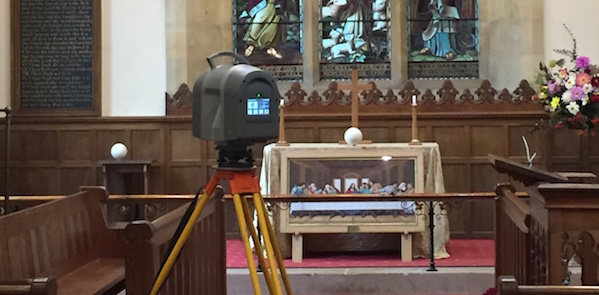Technology is a great tool and we are only beginning to scratch the surface of the potential of how we can use it to work more productively with the built environment.
Following our investment in a Trimble TX8, Landform Surveys are currently training staff in BIM and Revit. We will be working to offer a full service to compliment our provision of point cloud and RCP data in the near future. There are many advantages to adopting BIM, which is steadily being adopted by many in the surveying and construction industry.
What is BIM?
BIM stands for building information modelling. It’s a system that combines data capture as part of the larger overall structure of construction processes that makes it easier for people and information to work together more effectively.
Why is BIM necessary?
Working in the team environment that construction is can be chaotic without standards and organisation and BIM surveys help improve that organisation. BIM ensures that data created and obtained on building projects will be the same data that everyone on the project works from without having to worry about the quality of the data.
How is BIM used in practice?
As data will be passed back and forth between people who may not have been part of the data capture so needs to be accurate and relevant. BIM provides a framework that this can be done in.
The RICS website has a good definition of what BIM looks like in practice “Level 2 BIM effectively promotes sharing, analysis and reuse of information. The models offer a better visual representation of design/construction and can therefore be used to help inform decision-making. Software can be used to lay multiple models on top of one another to see how they fit together; a process that allows object clashes to be identified and managed.”
The aim of sharing information is to help in aiding decision-making by providing better information and visual representation. This is done by the continuity of model and data. The process of BIM goes from information fit for design, to information fit for construction to information of what has been constructed. It’s a start to finish process that will allow for the data to be stored once the project is finished, so that future work on the project will be more streamlined by minimising the amount of data that needs to be captured.
Will BIM be used for all built structure projects?
The adoption of Level 2 BIM is now mandatory in the UK for publicly procured projects. This was introduced earlier this year. While we do not deal exclusively in public projects, it’s important for us to stay ahead of industry standards, as this is the direction that construction is moving towards. Moving forward, more building projects will adopt this practice as standard.
What are the advantages of BIM?
There are many advantages of adopting BIM practices. At its core, BIM seeks to reduce waste and improve efficiency by streamlining processes and to make it easier to work together in a project environment. It will help to minimise the duplication of work and measurements, reducing time commitments on site. There’s also the ability to access the models before starting your part of the project to analyse information more easily. This will help in risk management and decision-making, as well as gain a better understanding of the project. BIM will improve collaboration when there are many businesses and working on a project, making communication easier.
The future of BIM
Technology supports the transition of information and will potentially open the door for automation. Once more and more agencies adopt BIM there will be more capacity for automation. The ability to automate will be limited by the quality of the information at the point of capture and our ability to use and interpret this data in practice. The BIM Task Group has been set up to help build the standards of modelling so that people are trained and are able to integrate BIM into their practices. As time goes on and more people adopt BIM, we’ll start to see more streamlined processes within the industry.
While we are still relatively early on in our BIM adoption journey, we look forward to learning more and integrating it into our daily operations when working with the built environment.


